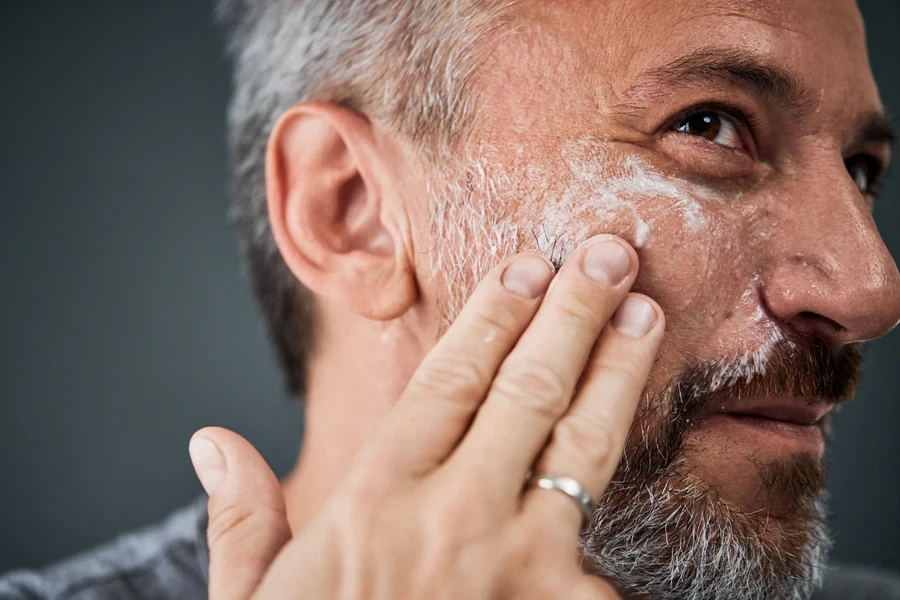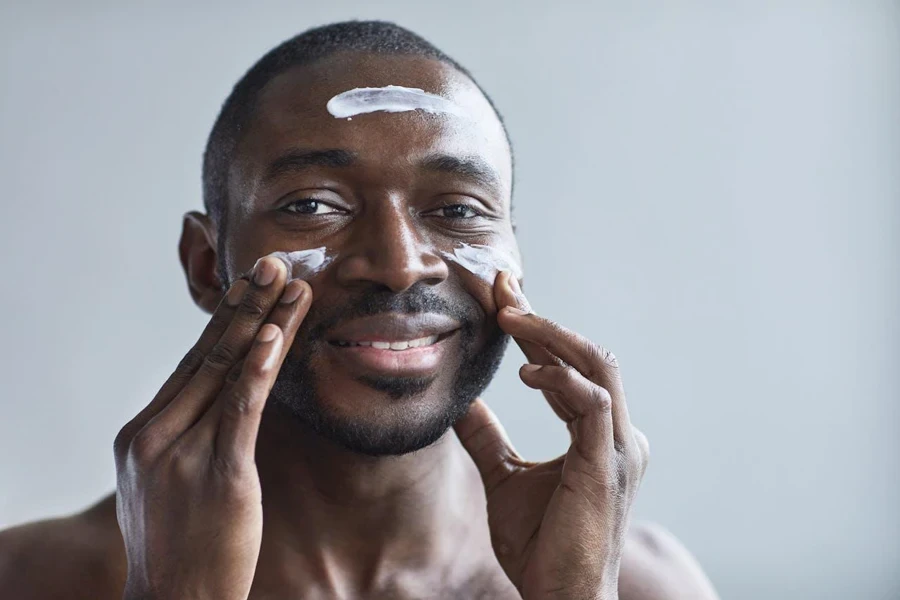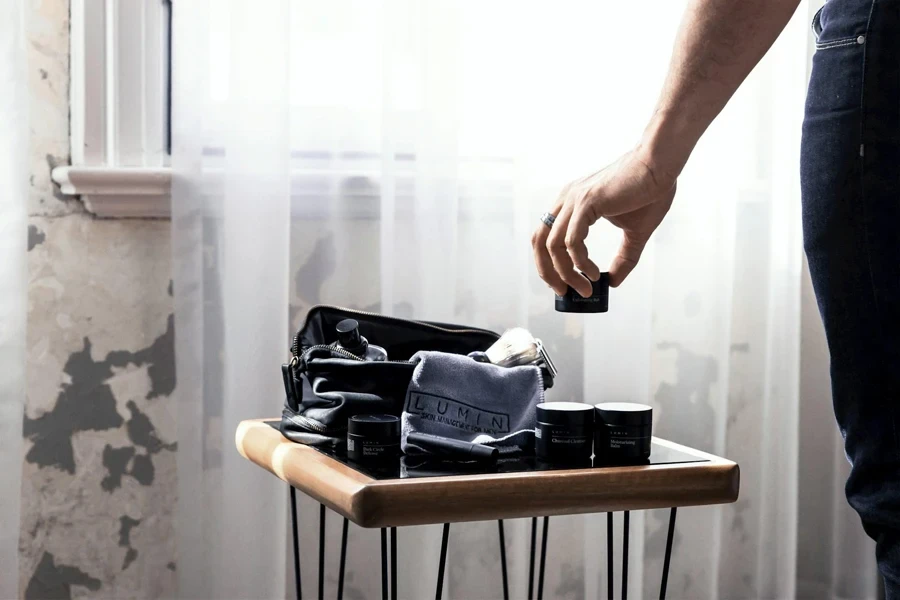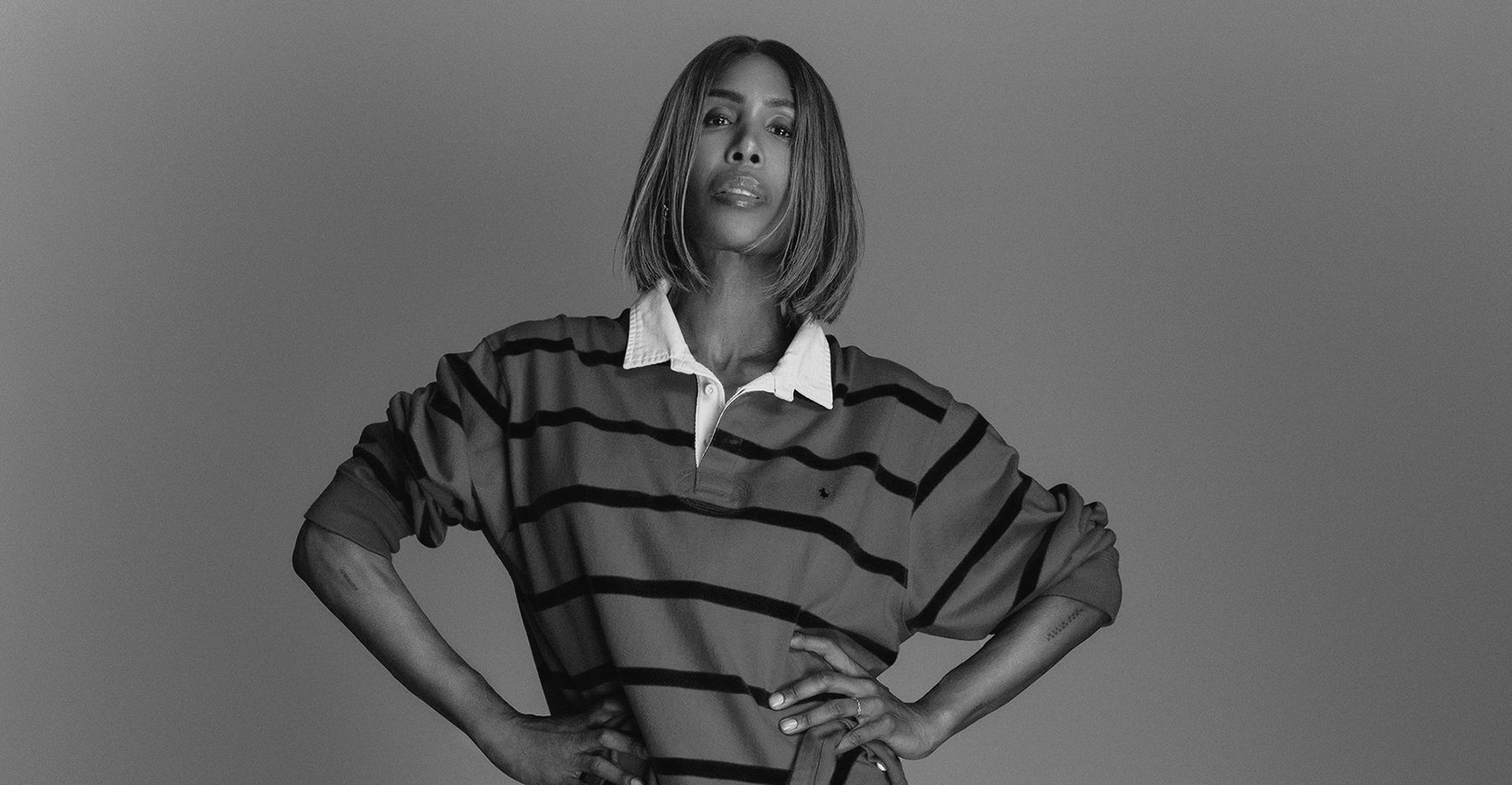In 2025, men’s skincare will no longer be just about basic grooming. More than ever men are embracing comprehensive skincare routines, investing in self-care, and exploring makeup basics. Over the past year, we regularly saw men sharing skincare and makeup tips on social media platforms like TikTok, where #MensSkinCare got more than 33k posts as of December 2024.
Let’s take a closer look at some of the top skincare trends for men in 2025.
The rise of soft masculinity in skincare
Men’s skincare market size
Key consumer profiles for men
Innovations addressing men’s skincare needs
Trend spotlight: The make-up-ification of men’s skincare
Trend spotlight: The skin beard connection
Marketing strategies for skincare brands
1. Educate and empower
2. Innovate for specific needs
3. Promote inclusivity and accessibility
Final thoughts
Not only are men starting to care more about their skin health as a means to look youthful, but the concept of soft masculinity is reshaping how men perceive beauty and self-care as a whole. This change emphasizes knowledge-sharing and empowerment making skincare a normalized aspect of men’s self-care routines.
That being said, men don’t need to be considered “soft” to embrace skin care. In recent years, the modern man from many different backgrounds is embracing skincare and even makeup.
The global beauty industry is changing as the men’s skincare market experiences unprecedented growth.
Between 2022 and 2024, U.S. males increased their use of facial skincare products by 68% according to Mintel. Additionally, the global men’s personal care market size was valued at USD 30.8 billion in 2021, while the skin care products segment dominated the market for men’s personal care and held the largest revenue share of 45.6% in 2021. The market is expected to grow at a compound annual growth rate (CAGR) of 9.1% between 2022 and 2030.
According to Precedence Research, the global men’s skin care products market size is predicted to increase from USD 16 billion in 2023 to approximately USD 29.61 billion by 2033. This indicates the need for increased product offerings and better education on innovating strategies for skincare for men in 2025.

Market research suggests that different generations of men have differing concerns in the skincare space. Understanding these consumer insights and your target audience can help your beauty brands boost sales in each category.
Men’s skin has unique characteristics that demand targeted solutions. Generally, men’s skin produces more acne-causing sebum and has fewer protective antioxidants against UV damage than women’s skin. These nuances present opportunities for product innovation and education:

Additionally, as men from diverse backgrounds adopt skincare routines, there’s increasing demand for products tailored to melanin-rich skin. Not only should beauty brands be considering the skincare differences for men with different skin types and textures but including a diverse range of people in the marketing campaigns.
Men’s skincare products should meet them where they’re at and address a range of skincare issues that they highlight as concerns. And, of course, there is always a learning curve with new products and routines, so providing education will help men get the most out of their personal care products.

The line between skincare and cosmetic products is blurring, with more men embracing subtle make-up to enhance their appearance. From tinted moisturizers to barely-there concealers, the “dewy dude” trend is making waves. On TikTok, #MakeupForMen has over 443.3m views globally, illustrating menʼs interest in enhancing their skin.
Mintel’s product innovation research revealed that 72 percent of men in the U.S. between 18–34 now use makeup as part of their grooming routines. 2024 has been an exciting year for skincare. Dwayne “The Rock” Johnson, launched a skincare line, PAPATUI, which includes everything from cleansers to tattoo care all on a budget.
The majority of male consumers are using these products to aid in creating a natural look that showcases healthy-appearing skin, like the no-makeup makeup look that is often discussed for women. For many, this means a focus on products like facial powder, concealers, and bronzers, with a focus on multi-use products. A great example of a multi-use product is a tinted sunscreen that offers sun protection while also blurring imperfections.
However, others are experimenting further and are the type of guys who would consider themselves beauty lovers who fully embrace every aspect of makeup application. And, of course, there are plenty of men that fall somewhere in between.

As beards remain a hallmark of men’s style, the focus on beard care and its connection to overall skincare is intensifying. Products designed to maintain both the beard and the skin beneath it are surging in popularity.
This trend includes beard oils with nourishing ingredients, exfoliating tools to prevent ingrown hairs, and multifunctional products that combine moisturizing and styling benefits. Brands are now educating consumers on how beard health contributes to skin vitality, making this a growing niche within the men’s skincare industry.
In the US, 91.37 million men use an electric shaver in 2024, up from 80.22 million pre- pandemic. Rising device use presents an opportunity to infuse skincare in product technology. Explore tools incorporating LED light therapy, ultrasound benefits, and skin diagnostic capabilities.

As we enter into a new year, brands need to have a solid men’s beauty marketing strategy. Here are some marketing strategies for skincare and beauty brands for 2025:
3. Promote inclusivity and accessibility
- Combine skincare with self-care messaging, as seen with brands like Insanely Clean, which supports mental health initiatives alongside its skincare offerings.
- Balance premium quality with accessible pricing to attract a broader audience.
Men’s skincare in 2025 is an exciting, rapidly evolving market. By focusing on targeted innovations, inclusive marketing, and consumer education, brands can tap into the growing demand for men’s self-care products. From skincare-meets-beard care hybrids to tinted moisturizers, the opportunities for innovation are endless.











